- NYSD: The tortoise and the hare at Skelton Castle - August 28, 2025
- Green Moor lift Billy Oates Memorial Cup at Hill Top Lane - August 13, 2025
- One weekend, short games: Kirkheaton & Upper Haugh excel - July 29, 2025
Hunkered down beneath the Dark Peak’s Wessenden Moor, cradled within a near-circle of a Holme Valley tributary’s gritstone hills, Meltham must count amongst Yorkshire’s most attractively sited small towns.
A Thursday evening Huddersfield Premier League T20 Shield Knockout quarter-final, against local and Championship division rivals Slaithwaite, tempted me into making only a second visit to Meltham – and a first to its cricket club.
Approaching along Mean Lane, the first indication of the cricket ground is an eye-catching wrought iron gate, painted green and bearing the legend ‘MCC 1867 1967’. It was installed, I assume, to mark Meltham Cricket Club’s centenary.

There cannot be many better views in White Rose recreational cricket than that from the first-floor balcony of the clubhouse at the Meltham Sports and Community Centre, which the cricketers share with athletics, bowling and football counterparts.
Natural features such as Meltham Cop, Thick Hollins Moor and West Nab can be seen from a vantage point that allows you to look, southwards, down the noticeably sloping, rectangular pitch’s wicket.
To the southwest, central Meltham, a busy (there’s an understatement!) crossroads at its heart, is denoted by the architecturally startling tower of St Bartholomew’s Church, most of which was built, to a stark Georgian style, in 1789.
It must have been the tower team’s practice evening because the church bells rang out for much of the match.

The imposing, two-storey clubhouse is relatively new. A framed photo montage in the upstairs bar shows the step-by-step construction work taking place in 2003.
It replaced the so-called Green Dragon, an old army barracks hut, with a green façade, that was bought for £350 and had been in place since 1921.
Nevertheless, to this day, a green dragon remains the logo of the Meltham club, who in a nod to the town’s industrial past are thought to have spent their early years being called Meltham Mechanics Institute Cricket Club.
For my money, the best approach to Meltham is via Wessenden Head Road, which drops steeply from the roof of the South Pennines as it slants northeast into town.
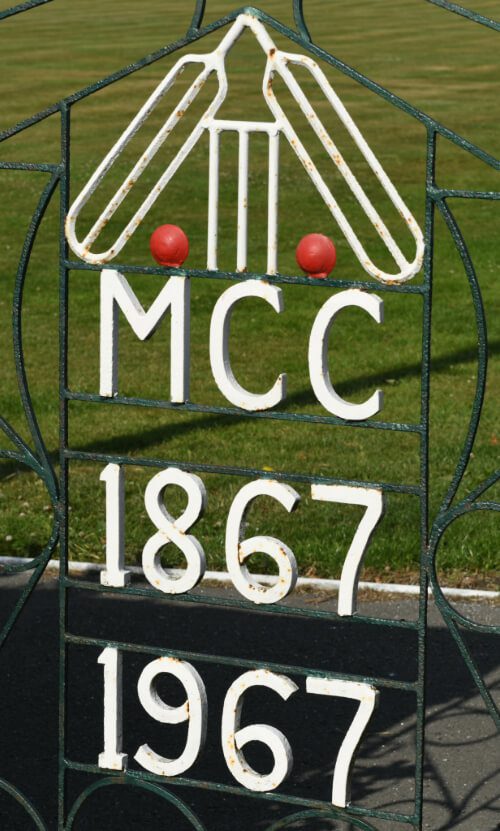
Close to the junction of Wessenden Head Road and its junction with the spectacular A635, linking Holmfirth and Greenfield, is a memorial to Keith Bennett, the 12-year-old victim of Moors Murderers Ian Brady and Myra Hindley. Keith’s body has lain, undiscovered, amid seemingly endless acres of windswept moss and peat, since 1964.
Visible on the descent into Meltham are the renowned Kirklees landmarks of the Emley Moor transmitting station’s tapering mast and – along the constricted tributary valley at whose head Meltham is positioned – Castle Hill, topped by the Victoria Tower.
Castle Hill, afflicted during part of the game by a mercifully short-lived wildfire (white smoke billowed hundreds of feet into the sky), can be seen from backless benches abutting a drystone wall on the cricket ground’s west side.
Meltham sprang to prominence as a textile manufacturing powerhouse, principally the Brook family’s cotton and silk operations (latterly, United Threads) at Meltham Mills. Amongst other things, the philanthropic Brooks built Meltham Town Hall. The mill closed in 1934.
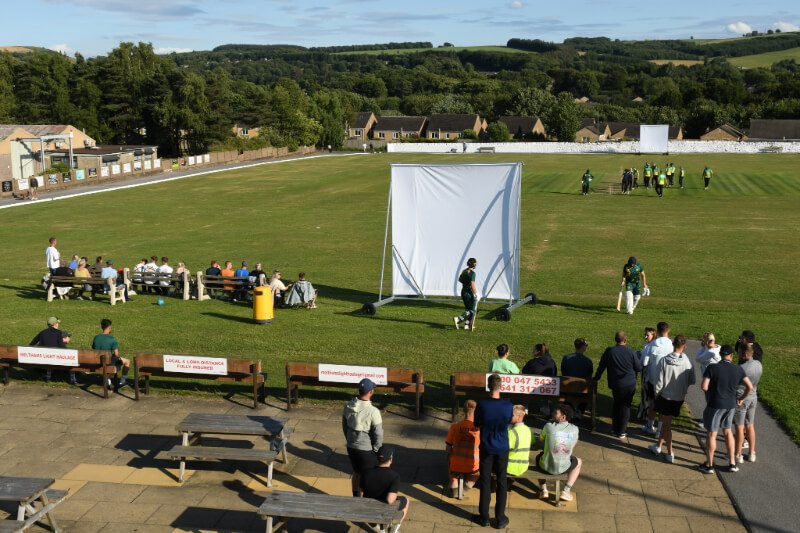
Meltham Mills used to have a cricket team in the Huddersfield [Premier] League. They were crowned champions twice, during the league’s first decade, in 1895 and 1898.
The Meltham Mills factory was taken over, in 1939, by tractor maker David Brown, owned and established by Huddersfield-born Sir David Brown (1904-1993), whose name, to outsiders at least, is probably linked more closely to Meltham than any other.
Onward transportation of tractors extended until 1965 the life of the three-and-a-half-mile Meltham branch railway (its uneconomic passenger trains had ceased running as long ago as 1949). A Morrisons supermarket occupies the former station site.
Partly because of cheaper foreign competition, in 1972 the David Brown Group sold their tractor operations to the US-owned J.I. Case, although the ‘David Brown’ tractor brand survived into the Eighties.
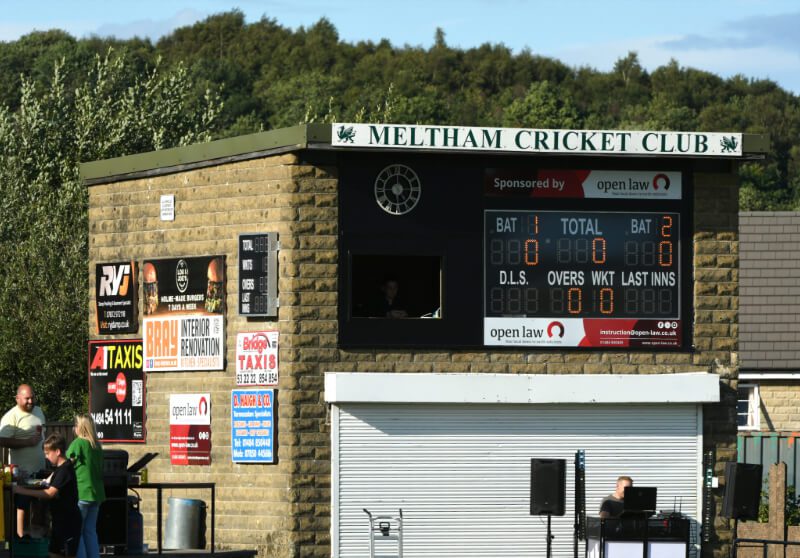
Over in nearby Lockwood, where in 1936, as Ferguson-Brown, David Brown first designed and produced tractors with Irishman Harry Ferguson (who, from 1953, was involved with the similarly famous Massey Ferguson company), the David Brown name is kept alive by the engineering – gears and gearboxes – of David Brown Gears.
Black Sheep Yorkshire Champions
Meltham Sports and Community Centre’s clubhouse bar and function room walls are adorned with framed photographs spotlighting Meltham Cricket Club’s storied history.
Pride of place goes to the teams that in 1994 and 1996 lifted the Black Sheep Yorkshire Champions Trophy, which in 2019 was discontinued – fixture congestion to blame – after 42 years.
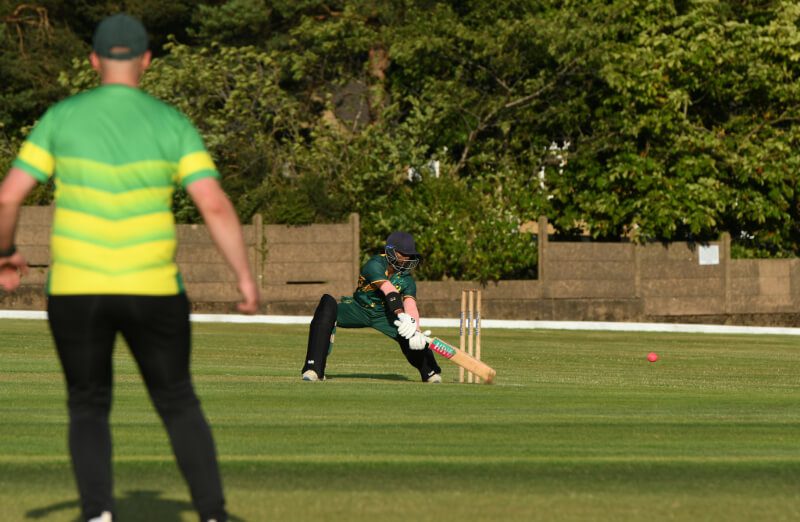
Twenty-three Huddersfield [Premier] League trophies – including seven Byrom Shields, awarded to the league champions – have been won by Meltham, who topped the table four times – three in a row – during the Nineties, a golden period in the club’s history.
Meltham became the first Huddersfield [Premier] League club to win its Sykes Cup knockout competition in four consecutive seasons: 1992, 1993, 1994 and 1995.
All-rounder Paul Booth was man-of-the-match in the 1992, 1993 and 1995 Sykes Cup finals. Uniquely, Booth won the Huddersfield [Premier] League’s bowling award in 1997, 1998 and 1999 then the all-rounder of the year prize in 1992, 1997 and 1999.

In 1994, Meltham secured, for the first time, the Huddersfield [Premier] League Championship and Sykes Cup double, a feat marked the following year by special civic recognition from Meltham Town Council.
Over the years, Meltham have had some top-class professionals. One of them, former India Test and ODI international Dilip Doshi, died on June 23, aged 77. His playing career also featured spells with Nottinghamshire (1973-78) and Warwickshire (1980-81).
More recently, after playing several games for Meltham in the Nineties, Huddersfield-born fast-medium bowler Ryan Sidebottom, more readily associated with the Holmfirth and Kirkburton clubs, went on to represent England, Yorkshire and Nottinghamshire.
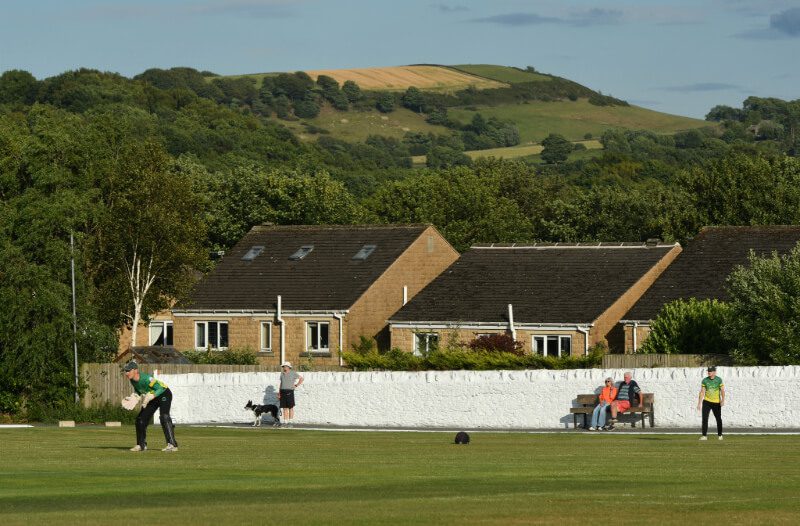
Other former Meltham professionals include Madan Lal (39 Tests for India and a 1983 World Cup winner) and Shahid Mahmood (capped once, at Test level, by Pakistan and the first cricketer from his country to take all 10 wickets in a first-class innings).
Part of a good-sized, good-natured crowd, we (my wife and I) plonked ourselves down on the ground’s west side, out of the breeze and shaded from sunshine that emerged fully from patchy cloud shortly before the start.
At our backs was the pitch, perpendicular to the cricket square, of the Huddersfield & District Association’s Meltham Athletic Football Club. Two bowling greens, home to Meltham Bowling Club, are behind the clubhouse, hidden unless you check out (as many did!) the large bar and function room.
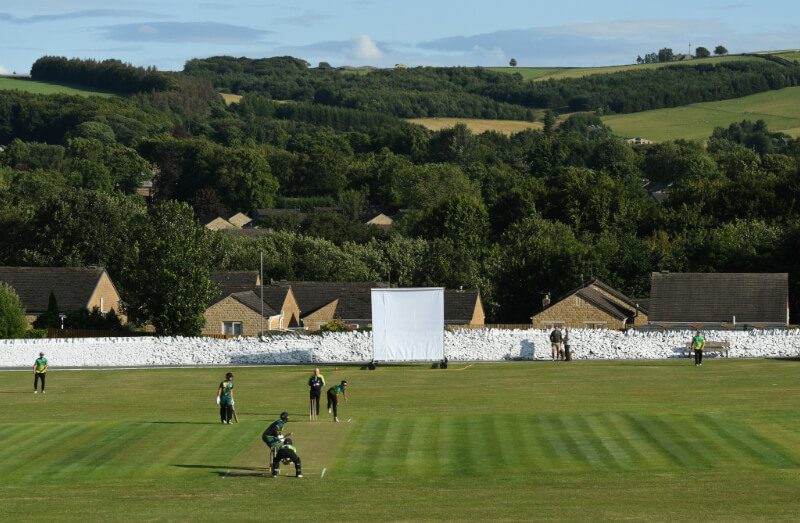
With Slaithwaite leading the Huddersfield Premier League’s second tier, and Meltham in fourth place, a close contest looked likely.
Owing to the pitch being long yet narrow, scoring runs either side of the wicket was much easier than hitting towards the ends.
Put in, Slaithwaite rattled up 188-8 from their 20 overs. “Not a bad score, that,” remarked a fellow spectator, who reckoned anything over 160 would be competitive.
From 9-1 and 85-5, two partnerships served Slaithwaite well.

No 5 Bhushan Talawadekar (61 from 38, three sixes, six fours), formerly with the Bradford Premier League’s Jer Lane, and Slaithwaite’s Indian left-handed overseas for 2025, added 43 for the sixth wicket with No 7 Bode Ratcliffe (30 off 17, one six, four fours) then 49 for the seventh with Jack Kaye (15 from 18, one four).
George Sykes impressed for the hosts. He took 3-28 from four overs and ran out, for 14, Slaithwaite No 3 Ely Van Der Merwe, a South Africa-born former Meltham player.
The second half of the match lacked suspense because Meltham, 61-4 at one stage, never really looked like getting near their target.

Meltham’s batting was at its most fluent when No 4 James Rawlinson (39 off 40, one six, four fours) and left-handed No 6 Khuram Sajjad (34 not out off 26, one six, four fours) were together. They put on 68 for the fifth wicket.
Rawlinson was run out, opportunistically, by spinner Cosmond Walters (1-22 from four), another ex-Jer Lane player, who dived to stop a shot smashed back at him before twisting to throw and dislodge the bails with the non-striker out of his ground.
I liked the look of young Slaithwaite pacer Max Berry, who clearly relished charging down the slope from the clubhouse end.
Berry, who last season played for MCC at Lord’s, finished with 2-30 from his four overs.
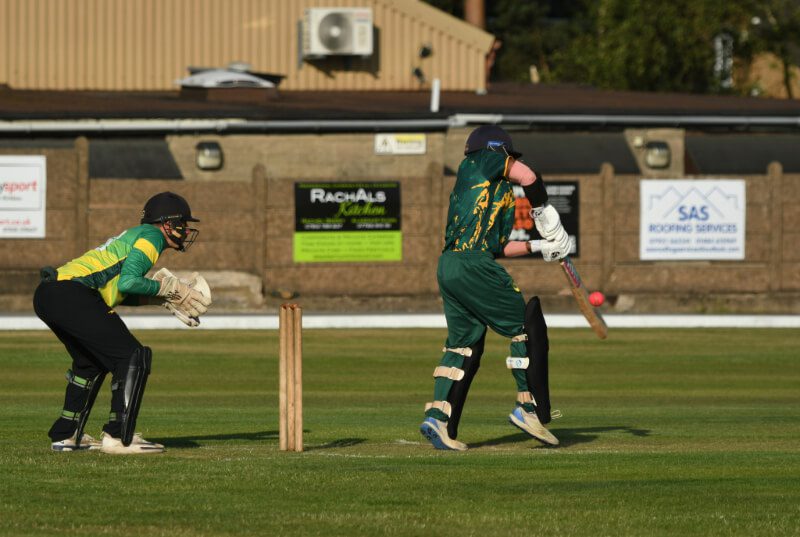
Wicketkeeper Kaye took three catches, dismissing Sam Clegg (0), Kyrone Cooper (14) and Sykes (1). Needing 80 from five overs, then 60 from two, Meltham, beaten by 50 runs, made 138-6 from their 20.
Great to see a sizeable turnout of spectators because Meltham put a lot of effort into staging the tie.
Public address announcements informed of batters and bowlers, a barbecue (meats supplied by G Haigh, a proper local butcher, whose Huddersfield Road shop we had spotted earlier, back in town), and a live DJ (what, no Dreadlock Holiday?!).
In the evening’s other last-eight T20 Shield Knockout head-to-heads, Armitage Bridge beat Linthwaite by 39 runs, Broad Oak lost by 23 runs at Cumberworth United, and Mirfield Parish Cavaliers trounced hosts Holmfirth by nine wickets.
The competition’s all-Championship division semi-finals are scheduled for Sunday, July 20 (2.0). Slaithwaite are at home to Armitage Bridge while Cumberworth United go to Mirfield Parish Cavaliers.
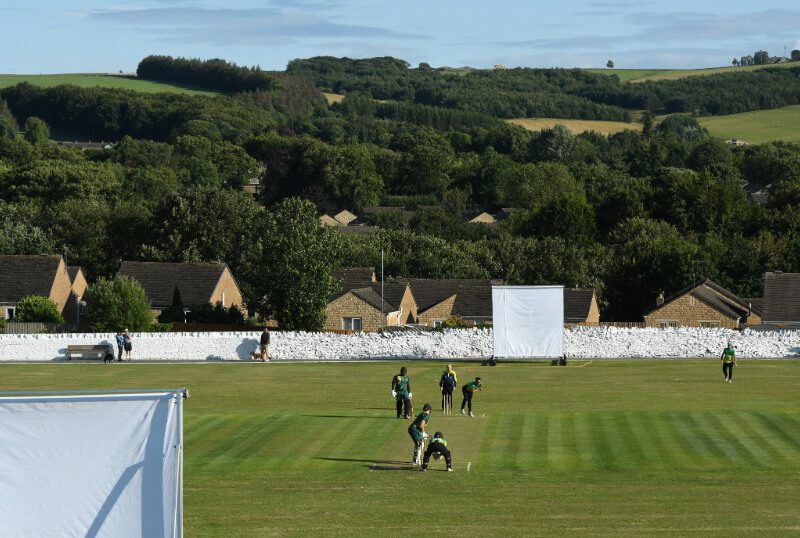
Enjoyed the read?
You can check out other club visits by Andrew in his column, Miles Per Gallon.
Here are all of our club cricket articles, with the latest first.
Or, you can read Huddersfield Premier League features here.